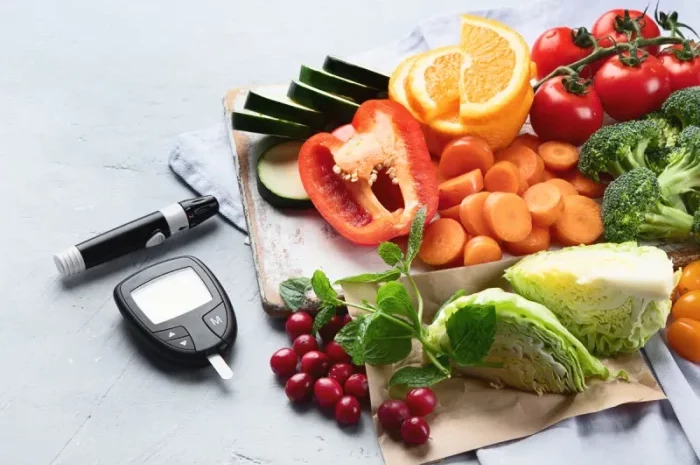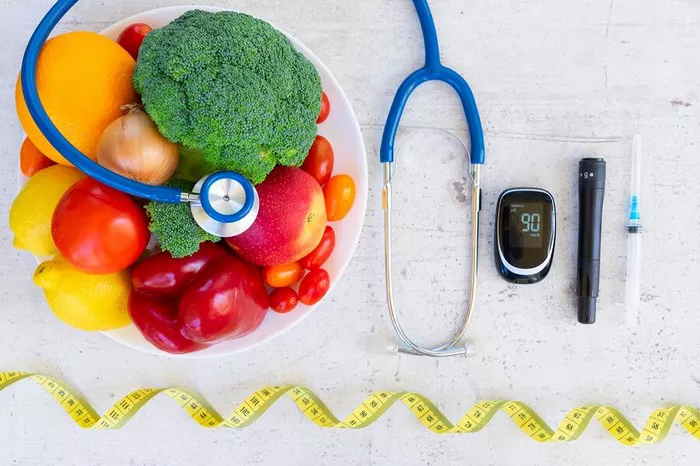Diabetes is a chronic condition that affects millions of people worldwide. It is characterized by high blood sugar levels, either due to the body’s inability to produce insulin (type 1 diabetes) or its inability to effectively use insulin (type 2 diabetes). While medication and lifestyle changes are essential in managing diabetes, one of the most effective ways to control blood sugar levels is through a balanced, diabetes-friendly diet.
This article explores the best foods for controlling diabetes, their health benefits, and how they can help manage blood glucose levels. By understanding how food affects blood sugar, people with diabetes can make better dietary choices that support long-term health and diabetes management.
Understanding Diabetes and the Role of Diet
Before we dive into the specific foods that can help control diabetes, it’s important to understand the basic principles of blood sugar management.
Type 1 and Type 2 Diabetes:
Type 1 diabetes is an autoimmune condition where the body attacks and destroys the insulin-producing beta cells in the pancreas. This leads to insufficient insulin production, and individuals with type 1 diabetes must take insulin injections to manage their blood sugar levels.
Type 2 diabetes, on the other hand, occurs when the body either becomes resistant to insulin or the pancreas does not produce enough insulin to maintain normal blood sugar levels. Lifestyle factors, such as poor diet and lack of physical activity, play a significant role in the development of type 2 diabetes.
The Importance of Diet in Managing Blood Sugar:
A well-balanced diet helps regulate blood sugar levels, improve insulin sensitivity, and prevent complications related to diabetes, such as heart disease, kidney problems, and nerve damage. The key to managing diabetes through diet lies in understanding the impact of food on blood glucose. Certain foods can cause rapid spikes in blood sugar, while others help slow down this rise, maintaining stable blood glucose levels.
The Best Foods for Diabetes Control
1. Non-Starchy Vegetables
Non-starchy vegetables are high in fiber, low in carbohydrates, and packed with essential vitamins and minerals. They are an excellent choice for anyone with diabetes, as they help keep blood sugar levels stable while providing a range of nutrients.
Examples: Leafy greens like spinach, kale, and collard greens, cruciferous vegetables like broccoli, cauliflower, and Brussels sprouts, as well as peppers, cucumbers, and tomatoes.
Why They’re Good: Non-starchy vegetables are rich in antioxidants and have a low glycemic index (GI), meaning they have minimal impact on blood sugar levels. They also contain fiber, which helps slow down the absorption of glucose into the bloodstream, reducing the risk of spikes in blood sugar.
2. Whole Grains
Whole grains are an excellent source of fiber, vitamins, and minerals, all of which contribute to better blood sugar control. Unlike refined grains, which have been stripped of their fiber and nutrients, whole grains retain the bran, germ, and endosperm, which helps slow the digestion and absorption of carbohydrates.
Examples: Oats, quinoa, brown rice, whole wheat, barley, and farro.
Why They’re Good: Whole grains have a lower glycemic index than refined grains, meaning they cause a slower, more controlled increase in blood sugar. The fiber content in whole grains also promotes digestive health and helps improve insulin sensitivity.
3. Legumes
Legumes, such as beans, lentils, and chickpeas, are excellent sources of plant-based protein, fiber, and essential minerals like potassium and magnesium. They are low in fat and high in complex carbohydrates, making them an ideal food for people with diabetes.
Examples: Black beans, kidney beans, lentils, chickpeas, and navy beans.
Why They’re Good: The high fiber content in legumes helps slow the absorption of glucose, preventing rapid spikes in blood sugar. Additionally, legumes are a low-fat, plant-based source of protein, which can help with weight management and improve overall blood sugar control.
4. Fatty Fish
Fatty fish, such as salmon, mackerel, and sardines, are rich in omega-3 fatty acids, which have been shown to reduce inflammation, improve heart health, and lower the risk of complications from diabetes, such as cardiovascular disease.
Examples: Salmon, mackerel, sardines, trout, and herring.
Why They’re Good: Omega-3 fatty acids help improve insulin sensitivity and reduce the risk of heart disease, which is a common complication for individuals with diabetes. Fatty fish also provide high-quality protein and healthy fats, which can help control hunger and support weight management.
5. Berries
Berries are low in sugar and high in fiber, making them an excellent choice for people with diabetes. They are also packed with antioxidants, which can help reduce inflammation and protect against oxidative stress, a factor in the development of diabetes complications.
Examples: Blueberries, strawberries, raspberries, blackberries, and cranberries.
Why They’re Good: Berries are low in glycemic index, meaning they have a minimal effect on blood sugar levels. Their high fiber content helps regulate blood sugar, and their antioxidants can protect against cell damage. Studies have also shown that berries may improve insulin sensitivity.
6. Nuts and Seeds
Nuts and seeds are nutrient-dense foods that provide a combination of healthy fats, fiber, and protein. They are excellent snacks for people with diabetes as they help control blood sugar and support overall health.
Examples: Almonds, walnuts, chia seeds, flaxseeds, and pumpkin seeds.
Why They’re Good: Nuts and seeds are rich in healthy fats, which help reduce inflammation and improve heart health. They also provide fiber, which can help control blood sugar levels by slowing the absorption of glucose. The combination of protein and healthy fats can also help keep you feeling full and satisfied.
7. Avocados
Avocados are rich in monounsaturated fats, which are heart-healthy fats that can help reduce the risk of heart disease, a common complication of diabetes. They are also high in fiber, which helps regulate blood sugar levels.
Why They’re Good: The high fiber content in avocados slows down the digestion of carbohydrates, preventing blood sugar spikes. Additionally, the monounsaturated fats in avocados improve insulin sensitivity and support overall metabolic health.
8. Greek Yogurt
Greek yogurt is a good source of protein, calcium, and probiotics, which are beneficial for gut health. It is lower in sugar than traditional yogurt, making it a better option for people with diabetes.
Why It’s Good: The probiotics in Greek yogurt may help regulate blood sugar and improve insulin sensitivity. The high protein content helps stabilize blood sugar levels by slowing the absorption of carbohydrates. Choosing unsweetened Greek yogurt is key to avoiding excess sugar.
9. Sweet Potatoes
Sweet potatoes are a good source of complex carbohydrates, fiber, and important nutrients such as vitamin A and potassium. They are an excellent alternative to white potatoes, which can cause rapid spikes in blood sugar.
Why They’re Good: Sweet potatoes have a low glycemic index compared to white potatoes, meaning they cause a slower, more controlled increase in blood sugar. The fiber content in sweet potatoes also helps regulate blood glucose levels.
10. Cinnamon
Cinnamon is a spice that has been shown to have a beneficial effect on blood sugar levels. It contains compounds that help improve insulin sensitivity and may lower fasting blood glucose levels.
Why It’s Good: Cinnamon helps enhance the body’s response to insulin, which can improve blood sugar control. Adding cinnamon to your meals or beverages is an easy way to add flavor and blood sugar-lowering benefits.
Foods to Limit or Avoid
While the focus is on foods that can help control blood sugar, it is also important to be aware of foods that can negatively affect diabetes management. These include:
Sugary Beverages: Sodas, fruit juices, and sweetened drinks cause rapid spikes in blood sugar levels.
Refined Carbohydrates: White bread, white rice, and processed snacks made from refined flour can cause quick increases in blood glucose.
Fried Foods: Fried foods are often high in unhealthy fats, which can lead to weight gain and reduced insulin sensitivity.
High-Glycemic Index Foods: Foods with a high glycemic index, such as sugary snacks and pastries, can cause sharp increases in blood sugar.
Conclusion
A balanced, diabetes-friendly diet is an essential component of managing blood sugar levels and reducing the risk of complications. The foods listed above, such as non-starchy vegetables, whole grains, fatty fish, berries, and nuts, can help control blood glucose levels, improve insulin sensitivity, and support overall health.
By incorporating these foods into your daily meals, you can create a diet that promotes better blood sugar control, improves heart health, and boosts your overall well-being. Always consult with your healthcare provider or a registered dietitian to tailor a diabetes-friendly diet that works best for your individual needs.
Related topics:
What Fruit is Good for Diabetes Type 1



























